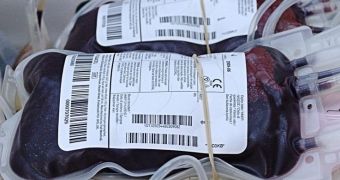Scientists at the Stanford University School of Medicine develop a new class of software algorithms that allow for regular laboratory instruments to exceed their own limitations. They essentially enable the machines to separate a blood sample into the various types of cells that make up the stuff, and then to identify potentially-significant genetic activity in these cell types. All of this will be done quickly and efficiently, as early tests have already proven the method is very reliable. Details of the new work appear in the March 7 issue of the respected scientific journal Nature Methods, ScienceDaily reports.
“Drawing blood is one of the most common diagnostic tests in clinical practice. We'd love to be able to use microarrays to find changes in the blood that indicate trouble somewhere in the body. But distinguishing one type of cell from another can be critical to doing that,” says Stanford assistant professor of pediatrics and of medical informatics, Atul Butte. The scientist was one of the investigators in the team that created the new software. He explained that, until now, the complex, multiple-component texture of whole-blood samples has hindered the use of common microarrays in such a useful way.
The team members say that using the new method provides them with clear indications as to which of the cellular components in blood is malfunctioning in a particular sample. For example, in their experiments, they focused on blood drawn from a patient that was supposed to receive a kidney transplant. But putting the sample into the microarray, and then using the software on it, the group was able to determine that cells known as monocytes were actually harmful, and could have easily caused the transplant to fail. “It was like a giant arrow pointing to the biological source of the rejection problem,” says Howard Hughes Medical Institute investigator, and the Burton and Marion Avery Family Professor of Immunology, Mark Davis, PhD. He is also the director of the Stanford Institute for Immunity, Transplantation and Infection.
The complexity of blood samples is no secret, the researchers add. “Any 7-year-old can look at a blood sample under a microscope and see it's a mix of a huge number of different kinds of cells,” Butte reveals. But the new microarrays make easy work of distinguishing between all types of cells present in those samples, he adds. This promises to be a very interesting tool in the near future, and Stanford researchers say they see no reason why it shouldn't be applied at a large scale.

 14 DAY TRIAL //
14 DAY TRIAL //